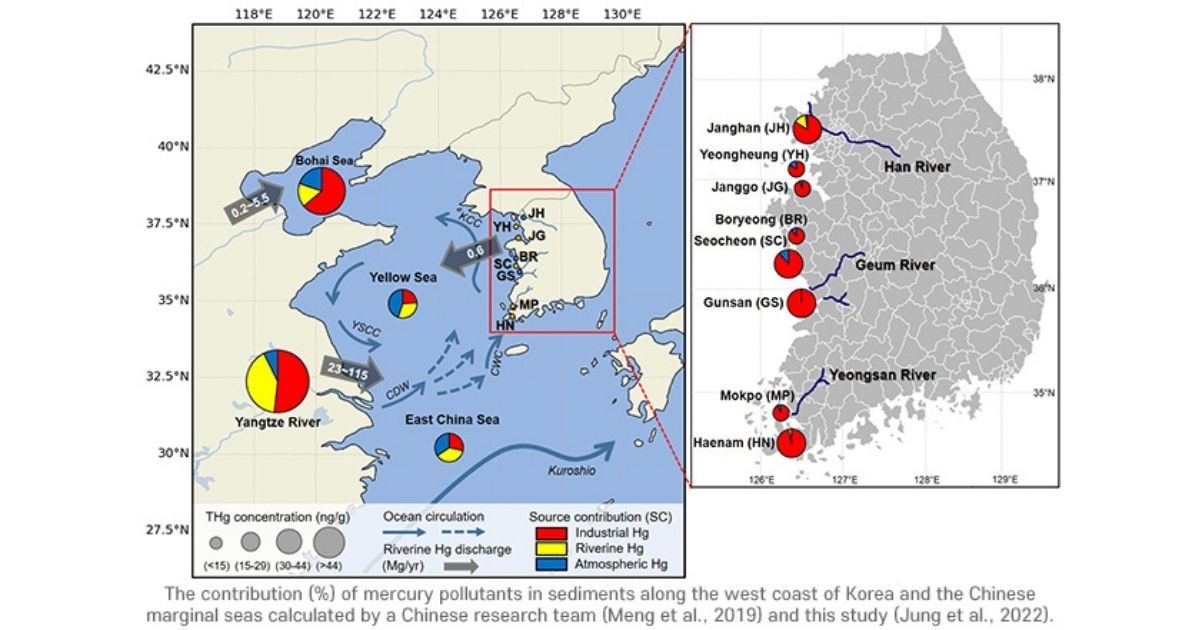Minamata, a British film released in 2021, is based on the true story of an American photographer documenting how the citizens of Minamata, Japan, became ill due to the industrial discharge dumped into the river by a Japanese corporation.
The Minamata disease, mentioned in the movie, is a neuromuscular disorder resulting from mercury poisoning. To prevent further human health impacts from mercury pollution, the UNEP Minamata Convention on Mercury, a multilateral agreement to mitigate anthropogenic mercury emissions and releases, was initiated in 2017.
In contrast to the Minamata disaster, it is often difficult to locate precisely the specific sources of mercury leading to the ecosystem and human health impacts in the natural environment. At the moment, it is widely accepted that mercury found in the water column and sediments of global coastal oceans is introduced via riverine transport, unlike the case of the Minamata disaster.
Recently, a POSTECH research team led by Professor Sae Yun Kwon and Ph.D. candidate Saebom Jung used mercury (Hg) stable isotopes* to quantify the relative importance of various mercury sources in the sediment along the entire west coast of Korea. The findings from the study were published in Science of the Total Environment.
The research team has used the end-members of mercury stable isotopes reflecting atmospherically deposited mercury, mercury discharged in the form of industrial effluent, and mercury transported via riverine systems to calculate the contribution of each source in the sediment. Analyzing this dataset showed that the Korean west coast sediments are most affected by anthropogenic mercury discharged directly into the coastal zones in the form of wastewater from industrial activities. This is also the case in many nearshore systems of the East Asian countries, including China.
There are already monitoring programs funded by the Korean government to screen mercury levels in coastal and marine sediments and fisheries products. However, analyses of mercury concentration alone do not provide sufficient information regarding the sources of mercury responsible for the contamination. In the case of Korea, many industries are located along the nearshore regions rather than along the riverine systems. The west coast also shares the Yellow Sea with China -- the world's largest emitter of mercury. This calls for further investigation on the contribution of various mercury sources into the Yellow Sea from both countries.
Stable isotopes have widely been used to characterize sources of various heavy metals (lead, zinc, chromium, mercury) in globally recognized contaminated sites such as the Minamata Bay. The utility is spreading quickly to the field of environmental forensics to screen sources at sites where the issues of contamination is just beginning to receive public attention. Stable isotopes are also applied to understand natural processes in the environment, which enhance the exposure of contaminants to wildlife and humans. The unique properties of the stable isotopes, indicating the same element with different numbers of neutrons depending on their origin, enable them to be used to characterize the source of the pollutants.
The results of this study are noteworthy for the nearshore management in East Asian countries. The conflicting results from the conventional concentration-based and modeling studies, which have attributed the riverine transport as the major mercury source to the global coastal oceans, also merit further investigation and utility of mercury stable isotopes.
"The information on the mercury sources along the Korean sediments and fish should be directed to formulating targeted management strategies and policies to mitigate industrial mercury releases. This should be an important objective since Korea is one of the signatory countries under the Minamata Convention," remarked Professor Sae Yun Kwon who led the study.
She added, "The regulation of industrial mercury releases to coastal oceans would also have a direct effect on improving the marine environment and safe consumption of seafood."
This study was supported by the National Research Foundation of Korea (NRF) grant funded by the Korean government (MSIT).
* An isotope that does not undergo radioactive decay by itself, that is, an isotope that is not radioactive.



